|
|
Creator | Title | Description | Subject | Date |
| 51 |
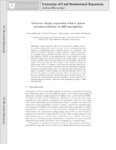 |
Gerig, Guido | Geodesic image regression with a sparse parameterization of diffeomorphisms | Image regression allows for time-discrete imaging data to be modeled continuously, and is a crucial tool for conducting statistical analysis on longitudinal images. Geodesic models are particularly well suited for statistical analysis, as image evolution is fully characterized by a baseline image an... | | 2013-01-01 |
| 52 |
 |
Gerig, Guido | Geodesic regression of image and shape data for improved modeling of 4D trajectories | A variety of regression schemes have been proposed on images or shapes, although available methods do not handle them jointly. In this paper, we present a framework for joint image and shape regression which incorporates images as well as anatomical shape information in a consistent manner. Evolutio... | | 2014-01-01 |
| 53 |
 |
Gerig, Guido | Geodesic shape regression in the framework of currents | Shape regression is emerging as an important tool for the statistical analysis of time dependent shapes. In this paper, we develop a new generative model which describes shape change over time, by extending simple linear regression to the space of shapes represented as currents in the large deformat... | | 2013-01-01 |
| 54 |
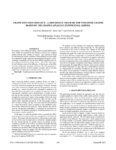 |
Gur, Yaniv | Graph diffusion distance: a difference measure for weighted graphs based on the graph Laplacian exponential kernel | We propose a novel difference metric, called the graph diffusion distance (GDD), for quantifying the difference between two weighted graphs with the same number of vertices. Our approach is based on measuring the average similarity of heat diffusion on each graph. We compute the graph Laplacian expo... | | 2013-01-01 |
| 55 |
 |
Gerig, Guido | Group mean differences of voxel and surface objects via nonlinear averaging | Building of atlases representing average and variability of a population of images or of segmented objects is a key topic in application areas like brain mapping, deformable object segmentation and object classification. Recent developments in image averaging, i.e. constructing an image which is cen... | | 2006-01-01 |
| 56 |
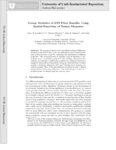 |
Gerig, Guido | Group statistics of DTI fiber bundles using spatial functions of tensor measures | We present a framework for hypothesis testing of differences between groups of DTI ber tracts. An anatomical, tract-oriented coordinate system provides a basis for estimating the distribution of diffusion properties. The parametrization of sampled, smooth functions is normalized across a population ... | | 2008-01-01 |
| 57 |
 |
Macleod, Robert S. | Identification and acute targeting of gaps in atrial ablation lesion sets using a real-time magnetic resonance imaging system | Background-Radiofrequency ablation is routinely used to treat cardiac arrhythmias, but gaps remain in ablation lesion sets because there is no direct visualization of ablation-related changes. In this study, we acutely identify and target gaps using a real-time magnetic resonance imaging (RT-MRI) sy... | | 2012-01-01 |
| 58 |
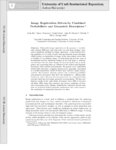 |
Gerig, Guido | Image registration driven by combined probabilistic and geometric descriptors | Deformable image registration in the presence of considerable contrast dierences and large-scale size and shape changes represents a signicant challenge for image registration. A representative driving application is the study of early brain development in neuroimaging, which requires co-registratio... | | 2010-01-01 |
| 59 |
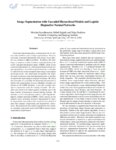 |
Seyedhosseini Tarzjani, Seyed Mojtaba | Image segmentation with cascaded hierarchical models and logistic disjunctive normal networks | Contextual information plays an important role in solving vision problems such as image segmentation. However, extracting contextual information and using it in an effective way remains a difficult problem. To address this challenge, we propose a multi-resolution contextual framework, called cascade... | | 2013-01-01 |
| 60 |
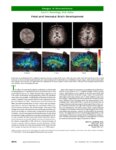 |
Gerig, Guido | Images in neuroscience: Fetal and Neonatal Brain Development | In the top row of longitudinal T1-weighted magnetic resonance images of the same child (and same scale), note the dramatic increase in total brain size as well as in white matter intensity over early development. In the bottom row of diffusion tensor images, white matter tractography of a neonate, o... | | 2006-01-01 |
| 61 |
 |
Gerig, Guido | Longitudinal growth modeling of discrete-time functions with application to DTI tract evolution in early neurodevelopment | We present a new framework for spatiotemporal analysis of parameterized functions attributed by properties of 4D longitudinal image data. Our driving application is the measurement of temporal change in white matter diffusivity of fiber tracts. A smooth temporal modeling of change from a discrete-ti... | | 2012-01-01 |
| 62 |
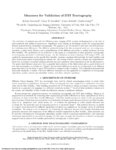 |
Gerig, Guido | Measures for validation of DTI tractography | The evaluation of analysis methods for diffusion tensor imaging (DTI) remains challenging due to the lack of gold standards and validation frameworks. Significant work remains in developing metrics for comparing fiber bundles generated from streamline tractography. We propose a set of volumetric and... | | 2012-01-01 |
| 63 |
 |
Gerig, Guido | Minimum description length with local geometry | Establishing optimal correspondence across object populations is essential to statistical shape analysis. Minimizing the description length (MDL) is a popular method for finding correspondence. In this work, we extend the MDL method by incorporating various local curvature metrics. Using local curva... | | 2008-01-01 |
| 64 |
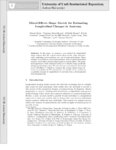 |
Gerig, Guido | Mixed-effects shape models for estimating longitudinal changes in anatomy | | | 2012-01-01 |
| 65 |
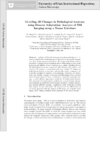 |
Gerig, Guido | Modeling 4D changes in pathological anatomy using domain adaptation: analysis of TBI imaging using a tumor database | Analysis of 4D medical images presenting pathology (i.e., lesions) is significantly challenging due to the presence of complex changes over time. Image analysis methods for 4D images with lesions need to account for changes in brain structures due to deformation, as well as the formation and deletio... | | 2013-01-01 |
| 66 |
 |
Gerig, Guido | Modeling longitudinal MRI changes in populations using a localized, information-theoretic measure of contrast | Longitudinal MR imaging during early brain development provides important information about growth patterns and the development of neurological disorders. We propose a new framework for studying brain growth patterns within and across populations based on MRI contrast changes, measured at each time ... | | 2013-01-01 |
| 67 |
 |
Gerig, Guido | Multi-atlas segmentation of subcortical brain structures via the AutoSeg software pipeline | Automated segmenting and labeling of individual brain anatomical regions, in MRI are challenging, due to the issue of individual structural variability. Although atlas-based segmentation has show its potential for both tissue and structure segmentation, due to the inherent natural variability as wel... | | 2014-01-01 |
| 68 |
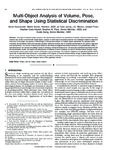 |
Gerig, Guido | Multi-object analysis of volume, pose, and shape using statistical discrimination | One goal of statistical shape analysis is the discrimination between two populations of objects. Whereas traditional shape analysis was mostly concerned with single objects, analysis of multi-object complexes presents new challenges related to alignment and pose. In this paper, we present a methodol... | | 2010-01-01 |
| 69 |
 |
Awate, Suyash Prakash | Multiatlas segmentation as nonparametric regression | This paper proposes a novel theoretical framework to model and analyze the statistical characteristics of a wide range of segmentation methods that incorporate a database of label maps or atlases; such methods are termed as label fusion or multiatlas segmentation.We model these multiatlas segmentati... | | 2014-01-01 |
| 70 |
 |
Gerig, Guido | Multiscale medial shape-based analysis of image objects | Medial representation of a three-dimensional (3-D) object or an ensemble of 3-D objects involves capturing the object interior as a locus of medial atoms, each atom being two vectors of equal length joined at the tail at the medial point. Medial representation has a variety of beneficial properties,... | | 2003-01-01 |
| 71 |
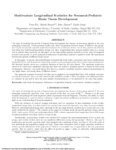 |
Gerig, Guido | Multivariate longitudinal statistics for neonatal-pediatric brain tissue development | The topic of studying the growth of human brain development has become of increasing interest in the neuroimaging community. Cross-sectional studies may allow comparisons between means of different age groups, but they do not provide a growth model that integrates the continuum of time, nor do they ... | | 2008-01-01 |
| 72 |
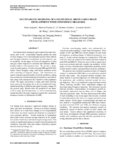 |
Gerig, Guido | Multivariate Modeling of longitudinal MRI in early brain development with confidence measures | The human brain undergoes rapid organization and structuring early in life. Longitudinal imaging enables the study of these changes over a developmental period within individuals through estimation of population growth trajectory and its variability. In this paper, we focus on maturation of white an... | | 2013-01-01 |
| 73 |
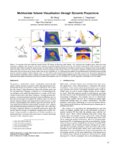 |
Pascucci, Valerio | Multivariate volume visualization through dynamic projections | We propose a multivariate volume visualization framework that tightly couples dynamic projections with a high-dimensional transfer function design for interactive volume visualization. We assume that the complex, high-dimensional data in the attribute space can be well-represented through a collecti... | | 2014-01-01 |
| 74 |
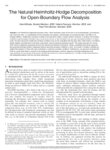 |
Pascucci, Valerio | The natural Helmholtz-Hodge decomposition for open-boundary flow analysis | The Helmholtz-Hodge decomposition (HHD), which describes a flow as the sum of an incompressible, an irrotational, and a harmonic flow, is a fundamental tool for simulation and analysis. Unfortunately, for bounded domains, the HHD is not uniquely defined, traditionally, boundary conditions are impose... | | 2014-01-01 |
| 75 |
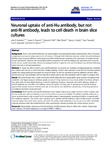 |
Jaskowski, Troy D. | Neuronal uptake of anti-Hu antibody, but not anti-Ri antibody, leads to cell death in brain slice cultures | Background: Anti-Hu and anti-Ri antibodies are paraneoplastic immunoglobulin (Ig)G autoantibodies which recognize cytoplasmic and nuclear antigens present in all neurons. Although both antibodies produce similar immunohistological labeling, they recognize different neuronal proteins. Both antibodies... | | 2014-01-01 |

























